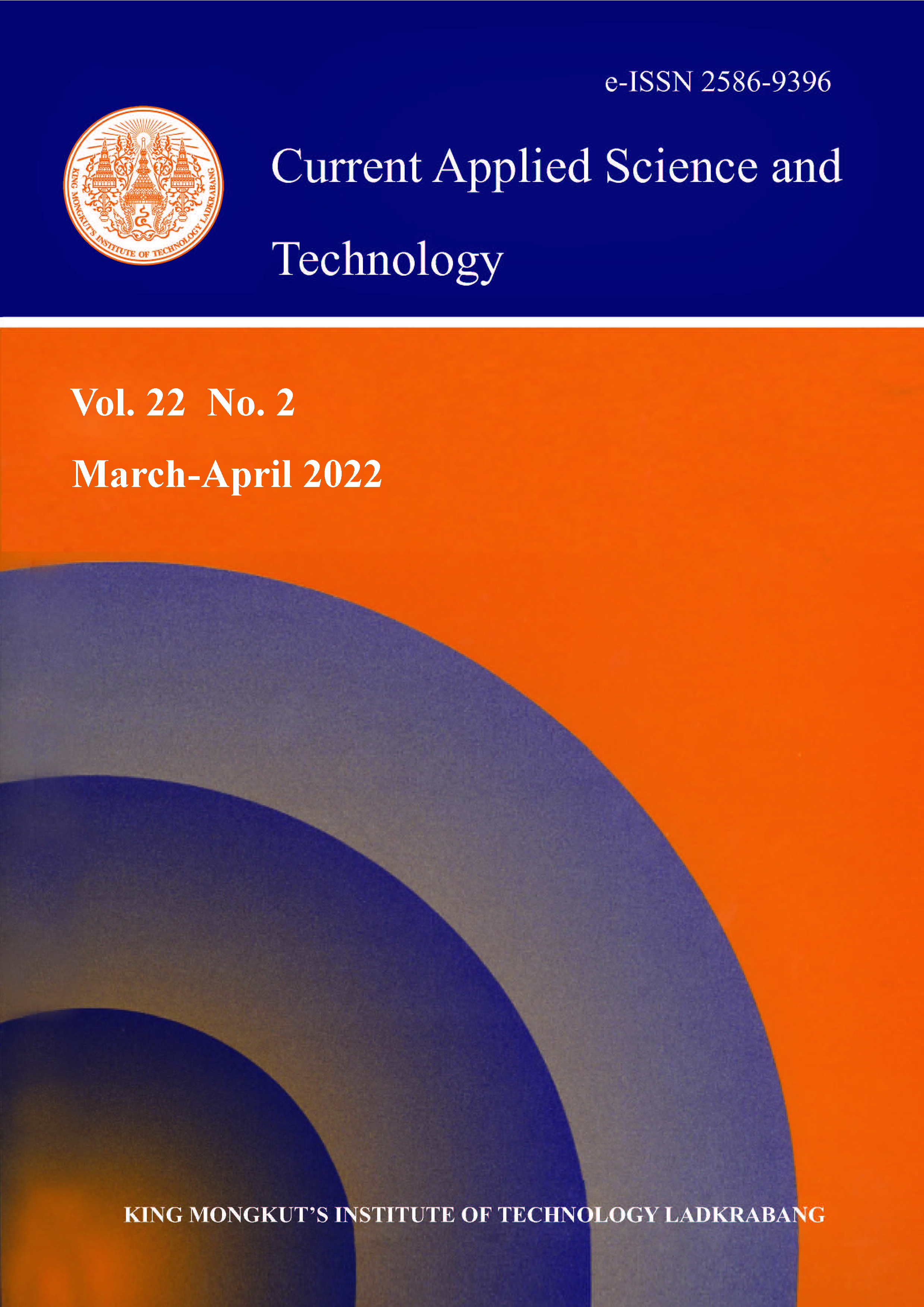Simplified Groundwater Flow at Nuclear Power Plants
Main Article Content
Abstract
As a result of the Fukushima Daiichi nuclear power plant disaster, significant amounts of radioactive materials have been introduced into the environment. Local and international organizations continue to monitor the situation and its effect on aquatic ecosystems as well as on human health. One of the many concerns after such an accident is the civil and construction work required to address such issues; however, multiple studies tend to consider nuclear power plant sites as being founded on soil when in reality such installations are founded on rock. Using real nuclear power plant structural geometries and field data, 2-D numerical simulations were conducted to estimate the amount of groundwater flow that could be expected. The results show the amount of groundwater flux to range from 0.07 to 46 m2/day, which from an engineering perspective is not that large. Because of this, maintenance and environmental safety workers could expect some groundwater intrusion when their excavations reach the rock boundary.
Keywords: groundwater; nuclear power plant; rock sites
Corresponding author: Tel.: (+82) 52-712-7321
E-mail: eric.yee@kings.ac.kr
Article Details
Copyright Transfer Statement
The copyright of this article is transferred to Current Applied Science and Technology journal with effect if and when the article is accepted for publication. The copyright transfer covers the exclusive right to reproduce and distribute the article, including reprints, translations, photographic reproductions, electronic form (offline, online) or any other reproductions of similar nature.
The author warrants that this contribution is original and that he/she has full power to make this grant. The author signs for and accepts responsibility for releasing this material on behalf of any and all co-authors.
Here is the link for download: Copyright transfer form.pdf
References
International Atomic Energy Agency, 2004. Geotechnical Aspects of Site Evaluation and Foundations for Nuclear Power Plants. Safety Standards Series No. NS-G-3.6. Vienna: International Atomic Energy Agency.
International Atomic Energy Agency, 2015. Site Survey and Site Selection for Nuclear Installations. Safety Standards Series No. SSG-35. Vienna: International Atomic Energy Agency.
Atomic Energy Licensing Board, 2011. Guideline for Site Evaluation for Nuclear Power Plant. Salangor: Ministry of Science, Technology and Innovation.
Ohta, T., Mahara, Y., Kubota, T., Fukutani, S., Fujiwara, K., Takamiya, K., Yoshinaga, H., Mizuochi, H. and Igarashi, T., 2012. Prediction of groundwater contamination with 137cs and 131i from the fukushima nuclear accident in the kanto district. Journal of Environmental Radioactivity, 111, 38-41.
McCurry, J., 2014. Fukushima daiichi begins pumping groundwater into pacific. [online] Available at: https://www.theguardian.com/environment/2014/may/21/fukushima-ground waterpacific-nuclear- power-plant.
Kratchman, J. and Norton, C., 2015. Fukushima water contamination – impacts on the U.S. west coast. [online] Available at: https://www.nrc.gov/docs/ML1502/ML15021A530.pdf.
Hsu, K.C., 2004. Flow and solute transport in strongly heterogeneous porous media. Practice Periodical of Hazardous, Toxic, and Radioactive Waste Management, 8(3), 148-154.
Rao, P. and Medina, M.A., 2006. A multiple domain algorithm for modeling two dimensional contaminant transport flows. Applied Mathematics and Computation, 174(1), 117-133.
Mohrlok, U, Kirubaharan, C.S. and Eldho, T.I., 2010. Transport characteristics in a 3d groundwater circulation flow field by experimental and numerical investigations. Practice Periodical of Hazardous, Toxic, and Radioactive Waste Management, 14(3), 185-194.
Patil, S.B. and Chore, H.S., 2014. Contaminant transport through porous media: an overview of experimental and numerical studies. Advances in Environmental Research, 3(1), 45-69.
Domenico, P.A., 1987. An analytical model for multidimensional transport of a decaying contaminant species. Journal of Hydrology, 91(2), 49-58.
Birdsell, K.H., Wolfsberg, A.V., Hollis, D., Cherry, T.A. and Bower, K.M., 2000. Groundwater flow and radionuclide transport calculations for a performance assessment of a low-level waste site. Journal of Contaminant Hydrology, 46(2), 99-129.
Ko, N.Y. and Baik, M.H., 2016. Arrangement of disposal holes according to the features of groundwater flow. Journal of Nuclear Fuel Cycle and Waste Technology, 14(4), 321-329. (in Korean).
Sujitha, S., Dilip, D.M., Datta, S. and Babu, S., 2016. Time-dependent reliability analysis of the contaminant migration of radioactive waste in groundwater. Proceedings of Geo-Chicago Conference-Sustainability, Energy, and the Environment, Chicago, USA, August 14-18, 2016, pp. 179-187.
Park, K.W., Kwon, J.S. and Ji, S.H., 2018. Determination of location and depth for groundwater monitoring wells around nuclear facility. Journal of Nuclear Fuel Cycle and Waste Technology, 17(2), 245-261. (in Korean).
Kim, J.W., Bang, J.H. and Cho, D.K., 2020. Modeling the groundwater flow in the near-field of the near-surface disposal system. Journal of Nuclear Fuel Cycle and Waste Technology, 18(2), 119-131. (in Korean).
Manjari, K.G. and Babu, S., 2021. Probabilistic analysis of radionuclide transport for near-surface disposal facilities in spatially varying soils. Journal of Hazardous, Toxic, and Radioactive Waste, 25(1), https://doi.org/10.1061/(ASCE)HZ.2153-5515.0000555.
Lee, S.S., Kim, S.H. and Suh, K.Y., 2009. The design features of the advanced power reactor 1400. Nuclear Engineering and Technology, 41(8), 995-1004.
Domenico, P.A. and Schwartz, F.W., 1998. Physical and Chemical Hydrogeology. New York: Wiley and Sons.
Ghosh, B. and Madabhushi, S.P.G., 2007. Centrifuge modelling of seismic soil structure interaction effects. Nuclear Engineering and Design, 237(8), 887-896.
Jeremic, B., Tagazzoli, N., Ancheta, T., Orbovic, N. and Blahoianu, A., 2013. Seismic behavior of npp structures subjected to realistic 3D, inclined seismic motions, in variable layered soil/rock, on surface or embedded foundations. Nuclear Engineering and Design, 265, 85-94.
Elkhoraibi, T., Hashemi, A. and Ostadan, F., 2014. Probabilistic and deterministic soil structure interaction analysis including ground motion incoherency effects. Nuclear Engineering and Design, 269, 250-255.
Parker, J., Khan, M., Rajagopal, R. and Groome, J., 2014. Development of generic soil profiles and soil data development for ssi analyses. Nuclear Engineering and Design, 269, 312-316.
British Standards, 1999. BS 5930: Code of Practice for Site Investigations. London: British Standards Institution.
Korea Hydro and Nuclear Power Co., Ltd., 2010. Final Safety Analysis Report skn3,4. South Korea: Korea Hydro Nuclear Power.






